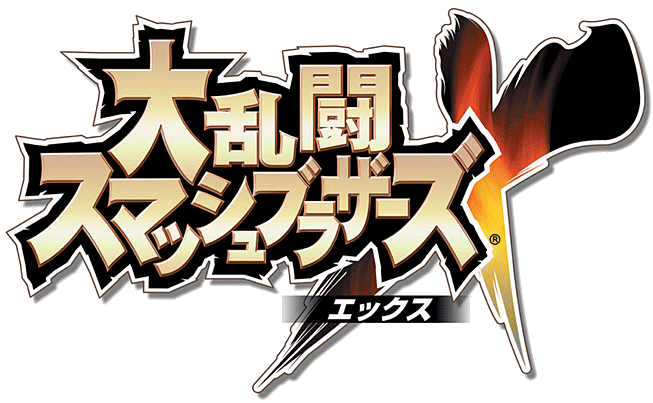Super Smash Bros Melee Jpn Isosceles
In gaming, a tier list is a list that ranks all in a game based on the strength of their fighting abilities, as well as their potential to win matches under conditions, assuming players are of equal skill. Tier lists are most commonly made for fighting games that are played at a high level, though games with large character pools, such as the series, can also have their. A large number of different tier lists exist for the series, but the most widely-accepted tier lists have generally been produced by the on. Exceptions, however, do exist, with the first widely-accepted tier list for being created by users on, and the most recent Smash 64 and tier lists being created by input from fan votes. Download Cleanmymac.v1.9.3.keygen.core.zip. Contents • • • • • • • • • • • How tier lists are calculated A character's standing on the tier list is based on a variety of factors, including: • the current of the game itself; • the current metagame of the character in question; • the character's matchup spread; • and the character's tournament results. The current collective metagame The metagame's current state involves what tactics, characters, stages, and other factors make up the most common 'decisions' made in tournament play. In the tier lists, these decisions help to rank characters, based on how useful they may be in tournament matches shaped around these decisions. Solidcast 8 Keygen Torrent.

Metagames based on either the players' collective actions or a 's rulesets can result in characters being ranked higher or lower on the tier list. An example of the collective playerbase's metagame affecting the tier lists be seen in Brawl's tier list and its evolution over the years; on the first tier list, was considered among Brawl's best fighters, ranking sixth, owing to his long, safe recovery, powerful projectile game, and a number of excellent edgeguarding options. As Brawl's metagame began to advance, however, 's incredible potential led to him becoming arguably the most used characters in the game's tournament scene, with a notable part of each character's metagames involving how well they could handle the near-ubiquitous character. Was later noted for having a very unfavourable matchup against Meta Knight, due to being too slow to allow his projectile game to take hold, as well as Meta Knight having an extremely long, safe recovery that is notoriously difficult to intercept. Now ranks as 18th on the tier list, with his lowest position being 20th out of a pool of 38 to 39 characters.
The increasing prominence of Meta Knight in Brawl tournaments also affected numerous other characters beyond R.O.B., such as and, both of whom also struggle in the Meta Knight matchup and fell in the tier lists owing to this poor matchup. For rulesets determining a character's viability, custom movesets in Smash 4 have demonstrated this in the game's tier list. With custom moves enabled, several characters gained powerful benefits, with and especially benefiting due to their ordinarily lacklustre movesets; some smashers even thought Mii Brawler was a top-tiered character with custom movesets enabled, as some custom moves allowed the Mii Brawler's approach and combo games to become much safer and stronger compared to its regular moveset. The ban on custom movesets starting after, however, has prevented the full potential of either character from being explored in Smash 4 tournaments.
Both characters have thus far ranked poorly in Smash 4's tier lists, with Mii Brawler notably ranking 56th out of a pool of 58 characters in the game's third tier list. The character's individual metagame The metagame of individual characters is determined by how the players of a specific character use the character within the tournament setting, often in response to the general metagame. In general, characters with 'deeper' metagames, or, more options in the game's overall metagame, rank higher than characters with 'shallow' metagames, or, fewer options in the game's overall metagame. In Melee's early history as a competitive fighter, numerous debates stemmed from the viabilities of and his clone,; opponents of the tier list generally used Roy as an example of how tiers were irrelevant, claiming that Roy's prowess in competitive Melee was equal to that of Marth. Ultimately, Marth has since been accepted as the far superior fighter, primarily due to the differing metagame statuses of both characters. For the Japanese Brawl tier list, see. The following is the eighth tier list produced by the Smash Back Room.
It is current as of April 25, 2013. Tier List SS S A+ A- 1 2 3 4 5 6 7 1.000 2.344 3.375 3.750 5.813 5.844 6.375 B C+ C C- 8 9 10 11 12 13 14 15 16 17 18 19 8.000 8.656 9.844 11.656 12.531 13.094 14.438 15.219 15.844 16.563 18.031 18.500 D 20 21 22 23 24 25 26 27 20.750 21.281 21.844 22.625 - 24.063 24.406 25.938 E F 28 29 30 31 32 33 34 35 36 37 38 27.688 27.781 28.094 30.344 31.406 31.938 33.219 34.000 34.813 35.375 36.844 tier list. For a list of all Smash 4 NTSC tier lists, see. Free Download Program Buku Pemasaran Philip Kotler Edisi 13 Reasons. The following is the fourth tier list produced by the Smash Back Room.
